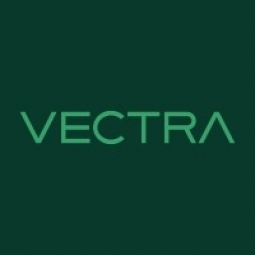Customer Company Size
Large Corporate
Region
- Pacific
Country
- Australia
Product
- Vectra AI-based network detection and response platform
- Detect for O365
Tech Stack
- AI Machine Learning
- Cloud/SaaS
- Data Center
- IoT
- Enterprise Networks
Implementation Scale
- Enterprise-wide Deployment
Impact Metrics
- Productivity Improvements
- Customer Satisfaction
Technology Category
- Analytics & Modeling - Machine Learning
- Cybersecurity & Privacy - Network Security
Applicable Industries
- Healthcare & Hospitals
Applicable Functions
- Business Operation
Use Cases
- Cybersecurity
- Condition Monitoring
Services
- System Integration
About The Customer
The customer is an Australian Private Health Fund that has been operating as a non-profit company for nearly 50 years. Their main focus is on making healthcare stress-free for their members. They are proactive in their approach to cybersecurity, prioritizing visibility across their organization's environment to ensure the cyber wellness of their members. They are committed to ensuring that their members' information is not compromised in a cyberattack. The organization uses the Vectra AI-based network detection and response platform to leverage real-time threat detections and gain a clear understanding of any potential threat activity or security incident.
The Challenge
The Australian Private Health Fund was facing a challenge with their existing cybersecurity solution, Darktrace. The number of alerts they were receiving was overwhelming and they needed a solution that would reduce these alerts and increase visibility across their hybrid environments. They were looking for a solution that would not only protect against external threats but also spot unusual employee behavior that could lead to vulnerabilities. The organization wanted to ensure the cyber wellness of their members and prevent any risk of their information being compromised in a cyberattack.
The Solution
The Australian Private Health Fund selected Vectra as their preferred network detection and response (NDR) solution. Vectra's AI-based platform was chosen for its ability to monitor hybrid environments, increase visibility, and reduce unnecessary alerts. The platform uses AI machine learning models to deliver real-time attack visibility and make attack details easily accessible. The security team found that the threats Vectra places in high priority align with what they would consider critical as a business, reducing alert fatigue. They also deployed Detect for O365 to monitor their O365 environment. Detect for Office 365 applies AI-derived machine learning algorithms to proactively detect and respond to hidden cyberattackers and stop data breaches.
Operational Impact
Quantitative Benefit

Case Study missing?
Start adding your own!
Register with your work email and create a new case study profile for your business.
Related Case Studies.

Case Study
Hospital Inventory Management
The hospital supply chain team is responsible for ensuring that the right medical supplies are readily available to clinicians when and where needed, and to do so in the most efficient manner possible. However, many of the systems and processes in use at the cancer center for supply chain management were not best suited to support these goals. Barcoding technology, a commonly used method for inventory management of medical supplies, is labor intensive, time consuming, does not provide real-time visibility into inventory levels and can be prone to error. Consequently, the lack of accurate and real-time visibility into inventory levels across multiple supply rooms in multiple hospital facilities creates additional inefficiency in the system causing over-ordering, hoarding, and wasted supplies. Other sources of waste and cost were also identified as candidates for improvement. Existing systems and processes did not provide adequate security for high-cost inventory within the hospital, which was another driver of cost. A lack of visibility into expiration dates for supplies resulted in supplies being wasted due to past expiry dates. Storage of supplies was also a key consideration given the location of the cancer center’s facilities in a dense urban setting, where space is always at a premium. In order to address the challenges outlined above, the hospital sought a solution that would provide real-time inventory information with high levels of accuracy, reduce the level of manual effort required and enable data driven decision making to ensure that the right supplies were readily available to clinicians in the right location at the right time.

Case Study
Gas Pipeline Monitoring System for Hospitals
This system integrator focuses on providing centralized gas pipeline monitoring systems for hospitals. The service they provide makes it possible for hospitals to reduce both maintenance and labor costs. Since hospitals may not have an existing network suitable for this type of system, GPRS communication provides an easy and ready-to-use solution for remote, distributed monitoring systems System Requirements - GPRS communication - Seamless connection with SCADA software - Simple, front-end control capability - Expandable I/O channels - Combine AI, DI, and DO channels

Case Study
Driving Digital Transformations for Vitro Diagnostic Medical Devices
Diagnostic devices play a vital role in helping to improve healthcare delivery. In fact, an estimated 60 percent of the world’s medical decisions are made with support from in vitrodiagnostics (IVD) solutions, such as those provided by Roche Diagnostics, an industry leader. As the demand for medical diagnostic services grows rapidly in hospitals and clinics across China, so does the market for IVD solutions. In addition, the typically high cost of these diagnostic devices means that comprehensive post-sales services are needed. Wanteed to improve three portions of thr IVD:1. Remotely monitor and manage IVD devices as fixed assets.2. Optimizing device availability with predictive maintenance.3. Recommending the best IVD solution for a customer’s needs.

Case Study
HaemoCloud Global Blood Management System
1) Deliver a connected digital product system to protect and increase the differentiated value of Haemonetics blood and plasma solutions. 2) Improve patient outcomes by increasing the efficiency of blood supply flows. 3) Navigate and satisfy a complex web of global regulatory compliance requirements. 4) Reduce costly and labor-intensive maintenance procedures.

Case Study
Cloud-based healthcare solution for Royal Philips
Royal Philips wanted to launch its cloud-based healthcare solution HealthSuite Digital Platform in China to deliver services to help cope with challenges related to urbanization and population growth. Philips wanted to achieve this goal by combining mobile, cloud computing and big data technologies. To bring this platform and product to market, Philips required cloud computing and local technical service capabilities in China, in addition to a flexible IT infrastructure that could handle user requests.








